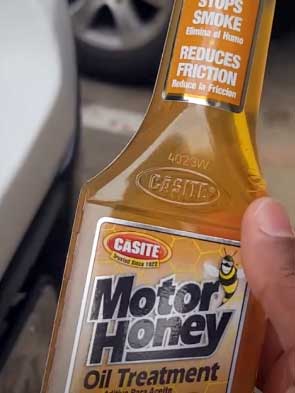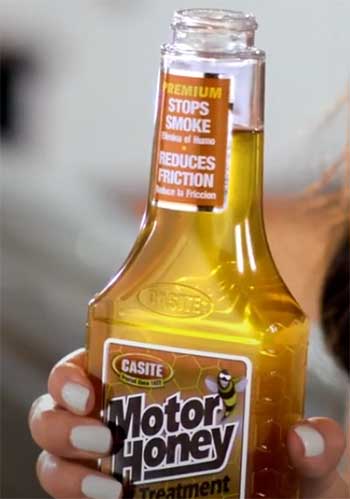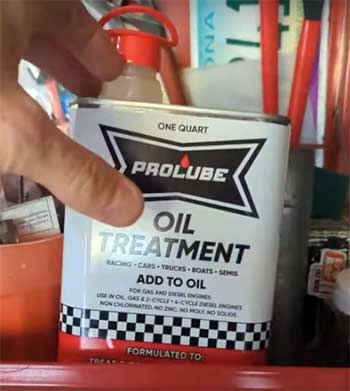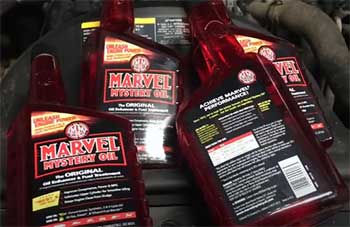When it comes to taking care of your car, you want to make sure you’re using the right products to keep things running smoothly. That’s where Motor Honey Oil Treatment comes in.
If you’ve been wondering whether or not this product is worth adding to your engine maintenance routine, you’re in the right place. I’ve spent some time using Motor Honey, and in this article, I’ll share my insights, tips, and everything you need to know before deciding if this treatment is for you.
My Experience With Motor Honey Oil Treatment

I remember the first time I tried Motor Honey Oil Treatment—my car was showing signs of trouble, with oil leaks starting to leave stains in the driveway and a noticeable puff of smoke during cold starts.
I wasn’t ready for an expensive trip to the mechanic, so after some research, I decided to give Motor Honey a try.
After an oil change, I poured the recommended amount into the engine and went on with my regular drives.
To my surprise, within a few days, I noticed an improvement. The puff of smoke was significantly reduced, and my engine ran a bit smoother.
One of the most surprising things was a slight boost in my gas mileage—not huge, but enough to feel like it was making a difference.
What really impressed me, though, was how well it worked as a temporary fix for the oil leaks. I had been losing oil slowly, but Motor Honey seemed to help seal those minor leaks, giving me more time before I had to address the bigger issue with my gaskets.
It wasn’t a permanent solution, but it definitely bought me peace of mind while I planned for proper repairs.
For anyone dealing with small oil leaks and wanting to avoid immediate expensive repairs, I’d say Motor Honey is worth a shot. It’s affordable, easy to use, and provides real results.
How Motor Honey Works: Pros
Motor Honey is marketed as a premium engine oil stop-leak product designed to seal minor leaks caused by hardened or drying gaskets and seals in both gas and diesel engines. If you’re like me, you’ve probably wondered if it actually lives up to these claims.
From my personal experience, the following pros stood out:

- Improved Gas Mileage: After using Motor Honey for a few weeks, I noticed that my gas mileage had improved slightly. This could be because the product helps reduce oil burn, which means your engine doesn’t have to work as hard.
- Less Smoke: One of the first signs that something is off in your engine is smoke. Motor Honey seemed to help reduce the amount of smoke my car produced, especially on cold starts. This was a clear indicator that the product was doing its job in minimizing oil leaks.
- Delays Major Repairs: While Motor Honey isn’t going to replace serious mechanical fixes, it can certainly buy you time. I was able to drive for a few months without worrying too much about my engine deteriorating, allowing me to save up for more significant repairs down the line.
- Ease of Use: Adding Motor Honey to my oil was incredibly easy. After a regular oil change, all I needed to do was pour it into the engine. No special tools, no fuss, just straightforward engine maintenance.
Cons of Using Motor Honey
Of course, Motor Honey isn’t a magic solution to all your engine woes. Like any product, it has its limitations, and it’s important to be realistic about what it can and cannot do. Here are a few drawbacks I’ve encountered:
- Temporary Solution: Motor Honey works best when used for minor leaks. If your engine is already severely damaged, it’s unlikely this product will be of much help. It’s essential to catch oil leaks early to get the full benefits.
- Thickens Oil: I noticed that after adding Motor Honey, the consistency of my oil became slightly thicker. This didn’t cause any immediate problems, but it’s worth noting if your engine is already sensitive to oil changes.
- Not for Severe Cases: While Motor Honey is effective for minor leaks, it won’t work miracles on severely damaged engines. If your car is already on the brink of needing major repairs, you’ll likely need to invest in professional help rather than relying solely on an oil treatment.
Maintenance Tips For Using Motor Honey
If you decide to give Motor Honey a try, it’s essential to keep your engine well-maintained to ensure the best results. Here are some tips I’ve found helpful:
- Use After Every Oil Change: For optimal performance, I recommend adding Motor Honey after every oil change. This helps the product mix well with fresh oil and allows it to work more effectively in sealing leaks.
- Monitor Oil Levels Regularly: Even though Motor Honey helps reduce leaks, it’s still crucial to keep an eye on your oil levels. If your engine is prone to burning oil, you’ll want to make sure the oil level stays within the recommended range.
- Don’t Overfill: Make sure not to overfill your engine when adding Motor Honey. Stick to the manufacturer’s recommended oil levels, and you’ll avoid any potential issues related to overfilling, which can cause excessive pressure.
Comparison With Other Brands
Now, let’s talk about how Motor Honey stacks up against other oil treatment brands. I’ve tried a few, and here’s how it compares:
- Prolube Oil Treatment

Prolube Oil Treatment is well-regarded for its ability to reduce friction and wear in the engine.
It’s specifically designed to boost oil viscosity, much like Motor Honey, but it has a more pronounced effect on engine noise and performance.
In my experience, Prolube was excellent at quieting a noisy engine, which is something I didn’t notice as much with Motor Honey.
However, Prolube doesn’t focus as much on addressing oil leaks. If your primary concern is leaks, Motor Honey takes the edge here.
Prolube is better suited if you’re trying to reduce overall engine wear and extend the life of an already healthy engine.
Motor Honey’s real strength lies in its ability to stop minor leaks and improve fuel efficiency, making it the better choice for a vehicle that’s beginning to show early signs of wear, like mine.
- STP Ceramic Oil Treatment

STP Ceramic Oil Treatment is another heavy hitter in the world of engine protection.
What sets it apart is the inclusion of ceramic particles designed to create a protective coating inside your engine, reducing friction and helping to protect against heat.
It’s an impressive product, especially if you’re dealing with high-performance vehicles or engines that are subject to extreme conditions.
However, when comparing it to Motor Honey, I found that STP Ceramic Oil Treatment doesn’t directly address the issue of leaks.
If your engine is already running hot or you’re trying to boost performance, STP may be a better fit.
On the other hand, Motor Honey focuses on sealing minor leaks and improving gas mileage, making it more suitable for everyday driving or older vehicles that are starting to show their age.
In my experience, Motor Honey offers a well-rounded solution for those dealing with minor leaks and looking to extend the life of their engine without investing in more aggressive treatments.
Frequently Asked Questions (FAQ)
Motor Honey works by helping to seal small leaks in your engine caused by drying or hardened gaskets. It thickens the oil slightly, which allows it to coat and protect these areas more effectively. It also reduces smoke, improves gas mileage, and extends the time you have before needing more extensive repairs.
The main disadvantage of Motor Honey is that it’s not a permanent solution for major engine issues. If your engine has severe damage, this product won’t reverse it. Additionally, it thickens the oil, which might not be suitable for every engine type, so it’s important to monitor performance after adding it.
Yes, engine oil additives like Motor Honey can work when used appropriately. They can extend the life of your engine, reduce leaks, and improve performance. However, they are best suited for minor issues and maintenance rather than as a fix for significant engine problems.
You pour Motor Honey directly into the engine oil reservoir, just like you would with regular oil. It’s best to add it right after an oil change for maximum effectiveness.
Conclusion: Is Motor Honey Worth It?
If you’re looking for a quick, easy, and affordable way to address minor oil leaks and extend the life of your engine, Motor Honey Oil Treatment is definitely worth considering.
It won’t replace the need for eventual repairs, but it can buy you valuable time while improving your engine’s performance in the short term. Just make sure to monitor your oil levels and keep up with regular maintenance to get the best results.
You can find Motor Honey at most auto parts stores or online retailers like Amazon, where you can also read more reviews and compare prices before making a purchase.
Give it a try, and see if it makes a difference in your engine’s performance. I found it helpful in my situation, and it might just be the solution you’re looking for too!

